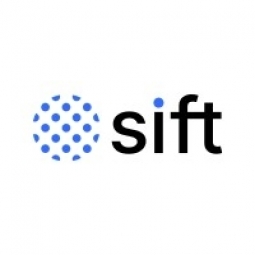公司规模
SME
地区
- America
国家
- United States
产品
- Qube Money
- Sift Payment Protection
技术栈
- Sift Console
- Stripe
实施规模
- Enterprise-wide Deployment
影响指标
- Cost Savings
- Customer Satisfaction
技术
- 应用基础设施与中间件 - API 集成与管理
适用行业
- 金融与保险
适用功能
- 商业运营
用例
- 欺诈识别
服务
- 网络安全服务
关于客户
Qube Money is a banking and budgeting app that utilizes digital versions of paper envelopes used in the popular cash-envelope budgeting method. Users can create an envelope or “qube” for various spending categories with their budget, and the funds are transferred to their linked Qube Card through Choice Financial Group, Qube’s sponsor bank. Having budgeting and banking all in one place eliminates the need for an additional service or apps, simplifying customers’ lives and creating a seamless experience. The app provides two points of friction to help customers get control of their spending—users must assign all of the money they put into Qube to a specific category in order to spend it, and when they want to make a purchase, they can only do so by opening and deducting from a qube. This is Qube Money’s Default Zero technology, which makes it so that users can’t spend money unless they open a qube. And this modern take on banking and budgeting works— on average, customers save about $400 a month using Qube just by using it. Qube Money was even recently named the #1 budgeting app of 2021 by Real Simple’s Smart Money Awards.
挑战
Qube Money, a banking and budgeting app, was facing issues with identity theft and account takeover fraud. Fraudsters were stealing identities and setting up accounts on Qube. International transactions also posed a risk due to more complicated chargeback processes. In the early stages of the startup, the app experienced a fraudulent attack by a fraud ring, costing the company tens of thousands of dollars. As an early-stage startup, they knew they couldn’t afford to have more fraud like this happen on their app.
解决方案
Qube Money uses the Sift Payment Protection product to combat fraud at the new account creation level. Accounts are assigned a Sift Score when they’re created and are either accepted or rejected based on the risk of the account. Sift provides Qube with a network view to connect accounts through IP addresses, phone numbers, emails, and over 16,000 other signals to not only stop the fraudster at hand, but pinpoint affiliated accounts that could exhibit fraudulent activity in the future. Qube is able to isolate accounts that have been blocked by Sift and monitor the associated IP address to easily hop on other connected accounts. For international transactions, Qube uses Sift to connect suspicious transactions through IP addresses, marking transactions as fraudulent so that repeated transactions can be easily tracked and blocked. Qube has also had success blocking accounts by evaluating email address names and identifying patterns, looking for strings of emails with only slight variations. The Qube team even utilizes Sift to monitor the age of email accounts, easily identifying fraudulent emails that may have been just created, and flagging them as potential fraud. Additionally, Qube uses Sift alongside Stripe to crossreference users and identify account takeover situations on Stripe, protecting their business from end to end.
运营影响
数量效益

Case Study missing?
Start adding your own!
Register with your work email and create a new case study profile for your business.
相关案例.

Case Study
Real-time In-vehicle Monitoring
The telematic solution provides this vital premium-adjusting information. The solution also helps detect and deter vehicle or trailer theft – as soon as a theft occurs, monitoring personnel can alert the appropriate authorities, providing an exact location.“With more and more insurance companies and major fleet operators interested in monitoring driver behaviour on the grounds of road safety, efficient logistics and costs, the market for this type of device and associated e-business services is growing rapidly within Italy and the rest of Europe,” says Franco.“The insurance companies are especially interested in the pay-per-use and pay-as-you-drive applications while other organisations employ the technology for road user charging.”“One million vehicles in Italy currently carry such devices and forecasts indicate that the European market will increase tenfold by 2014.However, for our technology to work effectively, we needed a highly reliable wireless data network to carry the information between the vehicles and monitoring stations.”

Case Study
Safety First with Folksam
The competitiveness of the car insurance market is driving UBI growth as a means for insurance companies to differentiate their customer propositions as well as improving operational efficiency. An insurance model - usage-based insurance ("UBI") - offers possibilities for insurers to do more efficient market segmentation and accurate risk assessment and pricing. Insurers require an IoT solution for the purpose of data collection and performance analysis

Case Study
Smooth Transition to Energy Savings
The building was equipped with four end-of-life Trane water cooled chillers, located in the basement. Johnson Controls installed four York water cooled centrifugal chillers with unit mounted variable speed drives and a total installed cooling capacity of 6,8 MW. Each chiller has a capacity of 1,6 MW (variable to 1.9MW depending upon condenser water temperatures). Johnson Controls needed to design the equipment in such way that it would fit the dimensional constraints of the existing plant area and plant access route but also the specific performance requirements of the client. Morgan Stanley required the chiller plant to match the building load profile, turn down to match the low load requirement when needed and provide an improvement in the Energy Efficiency Ratio across the entire operating range. Other requirements were a reduction in the chiller noise level to improve the working environment in the plant room and a wide operating envelope coupled with intelligent controls to allow possible variation in both flow rate and temperature. The latter was needed to leverage increased capacity from a reduced number of machines during the different installation phases and allow future enhancement to a variable primary flow system.

Case Study
Automated Pallet Labeling Solution for SPR Packaging
SPR Packaging, an American supplier of packaging solutions, was in search of an automated pallet labeling solution that could meet their immediate and future needs. They aimed to equip their lines with automatic printer applicators, but also required a solution that could interface with their accounting software. The challenge was to find a system that could read a 2D code on pallets at the stretch wrapper, track the pallet, and flag any pallets with unread barcodes for inspection. The pallets could be single or double stacked, and the system needed to be able to differentiate between the two. SPR Packaging sought a system integrator with extensive experience in advanced printing and tracking solutions to provide a complete traceability system.

Case Study
Transforming insurance pricing while improving driver safety
The Internet of Things (IoT) is revolutionizing the car insurance industry on a scale not seen since the introduction of the car itself. For decades, premiums have been calculated using proxy-based risk assessment models and historical data. Today, a growing number of innovative companies such as Quebec-based Industrielle Alliance are moving to usage-based insurance (UBI) models, driven by the advancement of telematics technologies and smart tracking devices.
Case Study
Enhancing Security and Compliance in Remitly's Global Money Transfer Service with Fastly
Remitly, an online remittance service, was faced with the challenge of securing its proprietary global transfer network. The company needed a security solution that could meet PCI requirements and protect customers' sensitive transactions through its mobile application. The solution had to be capable of defending against new and emerging attack types without impacting performance. Remitly also had to deal with irregular traffic patterns, such as a sudden spike in account transfers from a small network segment on the Pacific coastline of South America. The company needed to determine in real time whether such traffic indicated an attack or valid requests. A traditional web application firewall (WAF) would not be able to distinguish this traffic, potentially leading to customer frustration if the IP was blacklisted.







